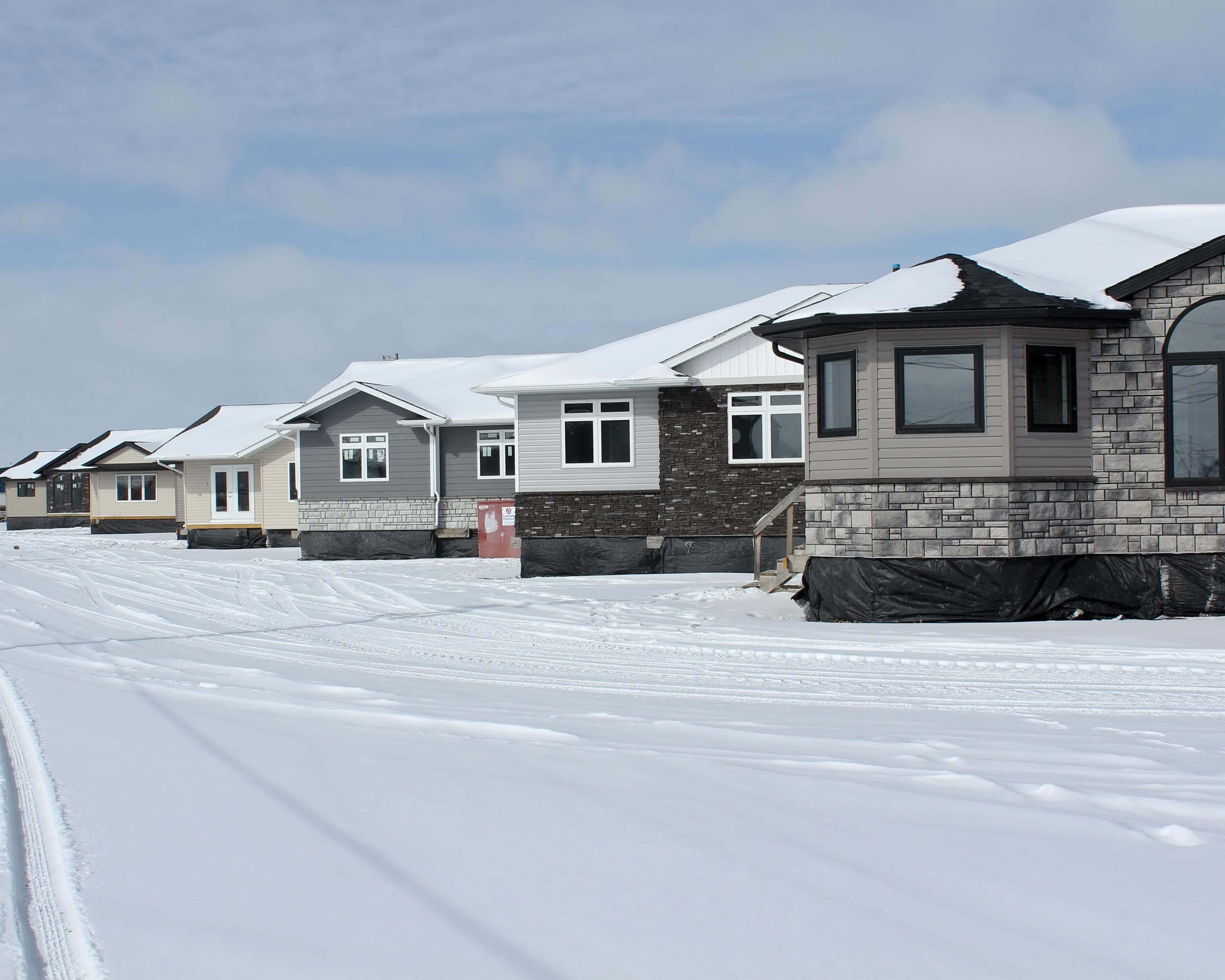With so many factors to consider, convenience and cost are playing a more vital role in decision making. This has led to the burgeoning trend of RTMs. Called ready-to-move homes or RTMs for short, they occupy a surprising and little-known niche in Canada’s new housing market. Given their low profile, it should be noted that ready-to-move homes are not the same as a mobile or trailer home or a modular dwelling that is “snapped” together on-site from prefabricated pieces. RTMs are built and finished at the manufacturer’s site then moved to where the buyer has prepared the foundations. They employ the same or very similar processes and materials contractors and developers use for their conventional homes, and once in place it’s impossible to tell the difference between an RTM and one built on-site at a sub-division.
Ken Large is the Public Works Director and Housing Manager at Saddle Lake, a First Nations reserve in Alberta. He says some years ago the Cree community was buying RTMs from other vendors, but when he took charge of housing, he suggested that the Saddle Lake community start building its own because it had the trades and the workers to do it. That first house, says Large, took three weeks to frame. “The guys had to learn. They had to take it apart and do it over. It was a slow process, but the guys caught on.”
Following the construction of that first RTM in 2009-10, the Saddle Lake enterprise has grown considerably, and now includes a building supplies business that is affiliated with Castle Building Centres. In fact, numerous RTM builders across the country maintain an affiliation with Castle in one way or another. In Saddle Lake, it is Large himself who supervises the Castle-affiliated business.
Large says he supplies other reserves with RTMs, including, for example, 10 homes in Saskatchewan. Generally, the smallest of the Saddle Lake models is 1040 sq. ft., and the largest is 1248 sq. ft., with prices running about $90 a sq. ft., which excludes the cost of foundations and moving. These and all other RTMs are covered by Canada’s national building code in addition to any provincial code requirements, including moves from one province to another. In addition, like site-built properties, they qualify for provincial new homes warranties.
Ken Wagar, Sales Manager at Warman Homes in Warman, Sask., about 20kms from Saskatoon, says his firm has been in the RTM business for 30 years, and does 80 to 90 homes a year with a standard cost of about $102 a sq. ft., selling models from 1129 sq. ft. to 1677 sq. ft. A ready-to- move house saves the buyer time, says Wagar, noting that from signing a contract to moving the RTM only takes about six months. “That time period includes us doing the drawings, (getting) the customers’ approval, ordering the material, then building the home.

In the meantime, while we’re doing the home here, the customer can be doing the foundation on site,” says Wagar. There’s less hassle with an RTM, too. “In a lot of places it’s difficult to get trades to come out”, notes Wagar, “or if they do, their charges are appreciably higher than usual”. Lower costs are another benefit of RTMs, adds Wagar, saying they are 10% to 15% cheaper than a house of similar size built on-site.
Contrary to what some may think, RTMs are complete when they are moved to their permanent location. They are not simply an empty box that has to be fitted out when attached to its foundations. Saddle Lake’s Ken Large says the materials used to build its RTMs are those typically found in houses built on-site, and their selection is the buyer’s choice. Typically, RTMS come with showers and bathtubs, sinks, cabinetry, interior doors, shelving, and so on depending on selected finishes. The homes are insulated, fully wired, with HVAC locations marked and cut. The drywall has been installed, taped and sealed with primer and the topcoat is applied on-site. There are models that have sunken living rooms, vaulted ceilings and all manner of design features. The possibilities are endless and your buyers can customize their home based on their preferences.

“Our RTM homes are built using the same materials as we use to build a site-built home, except they are built stronger because they have to be moved,” says Wagar. “There are certain things that are done to beef up the floors and the walls for structural support.” They include, for example, laminated veneer lumber or LVL for the home’s beams. LVL is an engineered wood product that is straighter and stronger than traditional timber. “Every house (RTM) we build is inspected daily,” says Wagar, a point Large also makes about the houses Saddle Lake builds.
Despite this extra strength, both men say that during the move any RTM will experience some superficial drywall cracks which are repaired by their respective companies once the house has been attached to its foundations. As can be imagined, moving an RTM requires specialists and specialized trucks. Essentially the RTM home is built on supports, and once finished steel beams are placed under the house, which is then picked up on a four-point lift and placed on the truck. Hauled to its permanent location, the site crew essentially “slides” the RTM onto its foundation and it is attached using steel straps. Of course, it is the responsibility of the buyer to ensure the foundation has been properly built and that all permits have been obtained.

It is also important for them to inform local police, confirm whether the roads are wide enough to allow the truck to pass and deal with any overhead obstacles prior to the actual move. The approximate cost of a move is difficult to assess. Large and Wagar note that so much depends on the distance involved a
